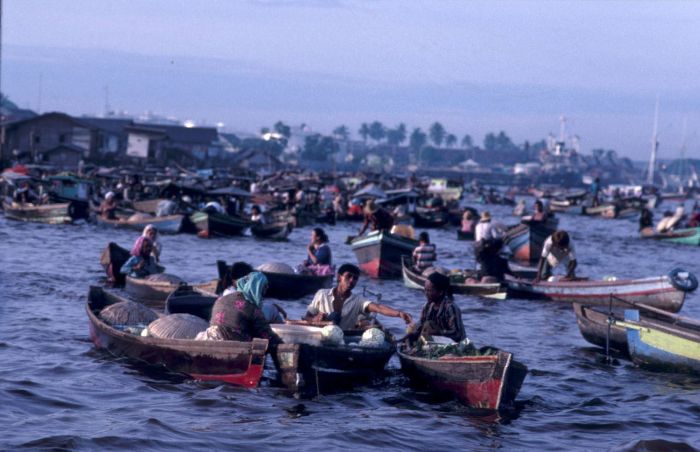Penyengat Island or Pulau Penyengat Inderasakti as historical sources, is a small island located approximately 2 km from Tanjungpinang City, the administrative center of the Riau Islands Province. This island measuring 2,000 meters long and 850 meters wide, is approximately 35 km from Batam Island. This island can be reached from Tanjungpinang by using a motorized boat or better known as pompong which requires a travel time of approximately 15 minutes.
Penyengat Island is one of the tourist attractions in the Riau Islands. On this island there are various historical relics, including the Sultan Riau Grand Mosque made of egg whites, the tombs of kings, the tomb of the national hero Raja Ali Haji, the Office Palace complex and the defense fort at Bukit Kursi. Since 19 October 1995, Penyengat Island and the palace complex on Penyengat Island have been nominated to UNESCO to become a World Heritage Site.
According to the story, this tiny island at the mouth of the Riau River, Bintan Island, has long been known by sailors for centuries because it has become a stopover to collect fresh water which is quite widely available on this island. There is no written record of the origin of the island’s name. However, from local folklore, this name comes from the name of an insect compatriot that has a sting. According to the story, there were sailors who violated the restrictions when taking water, so they were attacked by hundreds of poisonous insects. This animal is then called Penyengat and the island as Penyengat Island. Meanwhile the Dutch called the island Mars Island.
When the government center of the Riau Kingdom was located on the island, it was added to the island of Penyengat Inderasakti. In 1803, Penyengat Island was built from a center of defense into a country and then became the Yang Dipertuan Muda Kingdom of Riau-Lingga while the Sultan had his official residence in Daik-Lingga. In 1900, the Sultan of Riau-Lingga moved to Penyengat Island. Since then the role of Penyengat Island has been complete as the center of government, customs, Islam and Malay culture.
Malay Empire
Penyengat Island is a historical island and has an important position in the history of the rise and fall of the Malay Empire, which previously consisted of the Sultanates of Johor, Pahang, Siak and Lingga, especially in the southern part of the Malay Peninsula. This important role lasted for 120 years, since the establishment of the Riau Kingdom in 1722, until it was finally taken over completely by the Dutch in 1911.
Civil War to the throne of Johor
Initially this island was only a stopover for shipping fleets navigating the waters of Bintan Island, the Malacca Strait and its surroundings. However, in 1719 when a civil war broke out over the throne of the Johor Sultanate, the descendants of Sultan Mahmud Syah led by his son Raja Kecil against the descendants of Sultan Abdul Jalil Riayatsyah led by Tengku Sulaiman.
Penyengat Island began to be used as a stronghold by Raja Kecil who moved the center of his government from Kota Tinggi (Johor) to Riau on the Hulu Sungai Carang (Bintan Island). The civil war was won by Tengku Sulaiman and his brothers who were assisted by five Luwu Bugis aristocrats, namely Daeng Perani, Daeng Marewah, Daeng Chelak, Daeng Kemasi and Daeng Menambun. After which Tengku Sulaiman founded a new kingdom, namely the Kingdom of Johor-Riau-Lingga, on 4 October 1722, while Raja Kecil withdrew to Siak and subsequently founded the Siak Sultanate.
Source : wikipedia
































